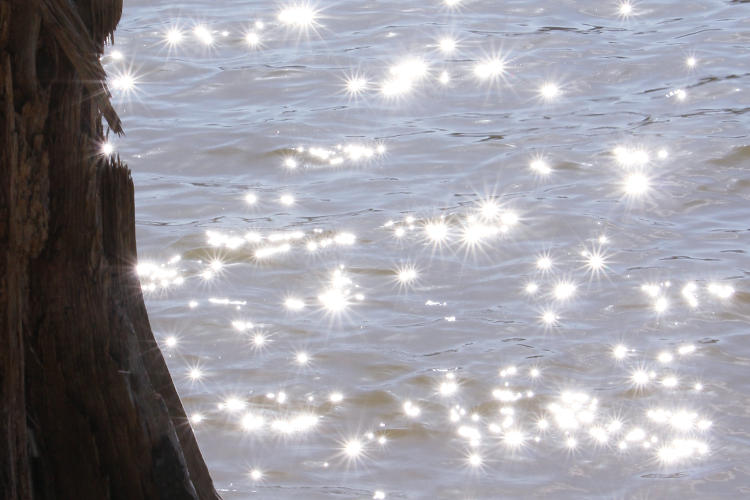Why, look – it is the end of yet another month! Boy, they just don’t seem to last anymore, do they? Back in my day, months lasted a month and a half, especially during the school year. They weren’t made in China, either.
But this means it’s abstract time. You still have a chance to redeem yourself, April, if you pony up the goods right now.

That… almost cuts it. Almost. But we still can’t let you go any further, April, so you have until midnight to clear out your stuff and vamoose.
Taken during an outing on Jordan Lake, the glitter trail was being especially sparkly, and I had the opportunity to set it alongside some seriously shaggy bark – c’mon now, who wouldn’t take advantage of that? I popped several frames, because water reflections are wildly variable, and picked this one because the starbursts seemed to balance out the best. The starbursts were, to no one’s surprise, provoked by using a small aperture.
Here’s something that I never knew, nor checked out before, but in reading about diffraction around aperture blades (or the secondary mirror mounts of telescopes,) I found that the diffraction always extends perpendicular to the diffracting element, in both directions, so there will always be an even number of ‘arms’ to the starbursts. Thus, apertures with five, seven, or nine blades will produce ten, fourteen, or eighteen arms respectively. Funny how I knew about the diffraction thing for years, yet never noticed that the arms were never an odd number, or seemed to exceed a reasonable count of blades. There are fourteen spikes on these stars, and yes, the Canon 18-135 STM lens that I used for this shot does indeed have seven blades.
In fact, the reason that we even call these ‘starbursts’ is because of this diffraction, caused solely by the secondary, forward mirror of a reflecting telescope being supported by thin arms across the mouth of the telescope tube – you won’t see such a thing by naked eye, or through a refracting (lensed) telescope. As astrophotography became more common, we started seeing these spikes around stars in the photos, and associate them together even though they’re only an artifact.
As a bare bit of useless trivia, I once did a mural in my bedroom of a starfield, including dust lanes and my impression of a black hole, and the prominent, bright star in my painting had multiple arms – four big primaries, and smaller secondary and still-smaller tertiary arms, like fractions of an inch on a ruler. Except that these never occur. Nertz.




















































